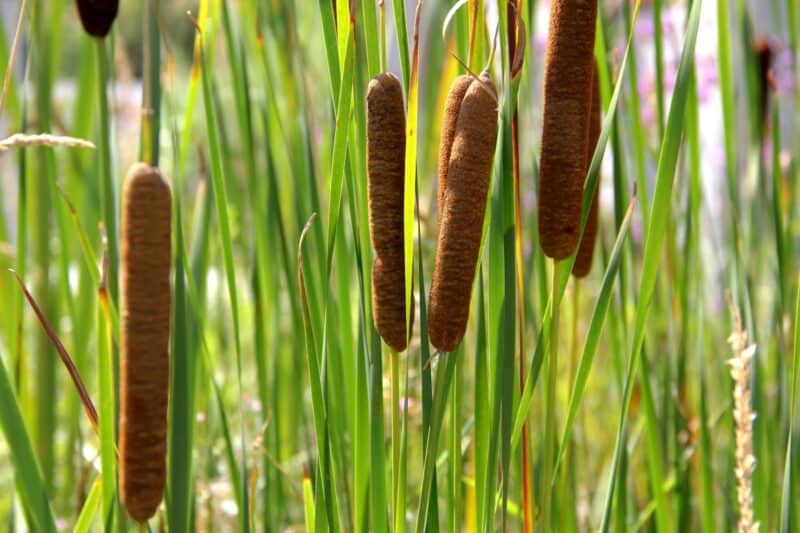Whether you’re a curious homesteader or a survivalist living off the grid, it’s important to know what plants are in your environment.

After all, when you’re living off the grid you are your own first responder; you often have to rely on yourself to survive.
There are many edible plants in the wild, but there are just as many lookalikes out there that can and do cause problems for those who eat them.
Cattail is found in numerous places but is it edible or not? Well, let’s find out.
Every part of the cattail plant is edible. Peeled stems and leaf bases can be eaten either raw or cooked – depending on your preferences. Pollen from the mature cones can be used as flavorant.
What is Cattail?
Typha latifolia or common cattail is native to North and South America, Europe, Eurasia, and Africa.
Cattail is also found in Canada and the Northwest Territories and Yukon. It was introduced to Australia and Hawaii where it’s classified as a noxious, invasive weed.
As far as the United States are concerned, cattail is found in all states except Hawaii.
The plant grows between 1.5 and 3 meters (5 – 10 feet) and has broad 2 – 4-centimeter (3/4 – 1.5 inches) leaves.
It grows in tropical, subtropical, southern, and northern temperate, dry, and coastal climates and is typically found at around 7,500 feet (2,300 meters) above sea level.
Cattail is always found in or near water at depths of 2.6 feet (0.8 meters), although the plant has been seen in mats where they can reach deeper depths.
It prefers freshwater but it can also grow in slightly brackish water. For those who don’t know, brackish means that the water is slightly salty.
Culinary Uses
Every part of the cattail plant is edible and was used in indigenous tribes of British Columbia as a food source as well as for other uses.
The rhizomes (root system) are edible after cooking and removing the skins. Peeled stems and leaf bases can be eaten either raw or cooked – depending on your preferences.
Pollen from the mature cones can be used as flavorant.
Nutritional Value
When you look up nutritional value of cattail, you commonly get the value of a 19 gram serving. In a 19g serving, you get:
| Manganese | 0.144 mg |
| Vitamin K | 4.3 µg |
| Magnesium | 12 mg |
| Fiber | 0.9 g |
| Iron | 0.17 mg |
| Vitamin B6 | 0.023 mg |
| Sodium | 21 mg |
In Closing
Okay, so let’s have a very quick recap:
- Yes, cattail is edible.
- The rhizomes need to have their skins cooked and peeled before they’re edible, but the stems and leaf bases can be eaten either cooked or raw.
- There is significant nutritional value to cattail.
In closing, I hope you all enjoyed the article and found it informative. As always, thanks for reading and I’ll see you for the next one! Until then, however, take care and stay safe!

Greg is a South African farmer and homesteader who’s been around animals ever since he can remember. He’s also an avid camper and hiker.
